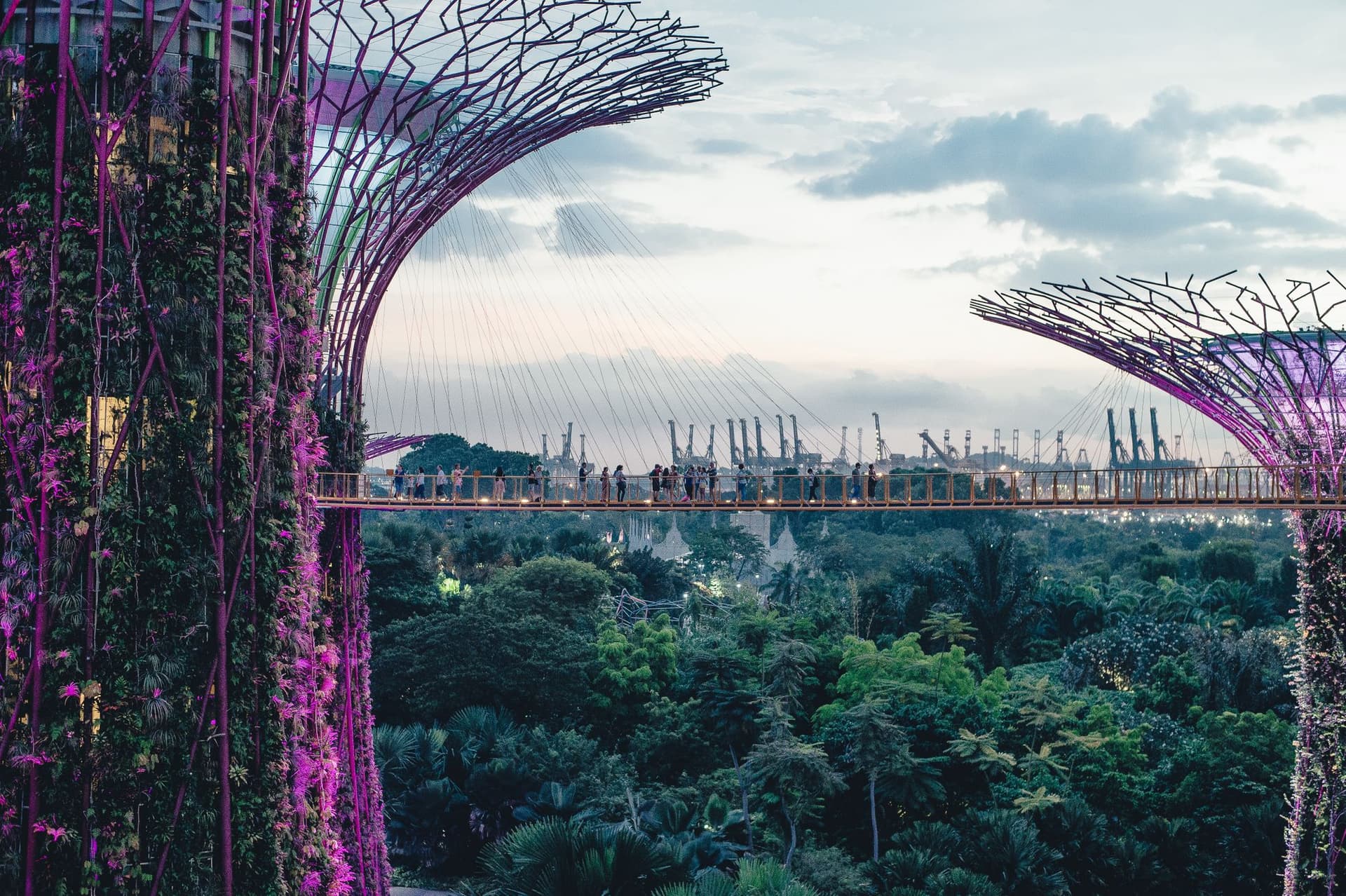Prefer to listen? Here’s an audio version of this post.
I still remember the setting: it was a little coffee shop in sunny Scottsdale, Arizona. We were three and a half months into planning the company retreat and a few days into the scouting trip. Nicole and I were knee deep in our notes from a morning meeting with a potential vendor and ideas for the retreat were flying.
By that time, we’d narrowed down our initial list of 18 potential retreat cities across the world to just three: Scottsdale, Budapest, and Singapore. Scottsdale was the first destination for the scouting trip and I was heading to Budapest at the end of that week.
With each scouting visit and meeting with our potential partners, it became increasingly clear that all three of these locations were amazing options for Buffer. Each of them was safe for our diverse team and fit within our budget. We were also assured of excellent connectivity and heaps of activities that would surely make for great memories for the team.
Confronted with the choice between three fantastic yet distinct locations, we found ourselves faced with the opportunity to take retreat planning further than we ever have.
As we reflected more deeply on how we wanted this retreat to be, more questions emerged and these eventually helped us shape our most intentional Buffer retreat to date:
- Beyond logistics, what are our objectives for the retreat? What were our cultural or engagement objectives for the retreat?
- What are our needs, as a team, at this point in time?
- How can we ensure that company retreats and mini-retreats are complementary to the remote working experience?
- How might a retreat in each of these cities look? What were the potential strengths and shortcomings?
- How have Buffer retreats looked in the past and how does this inform what they should look like in the future?
Let’s look at how these questions led us to bring 85 Bufferoos, partners, and Buffer kids to Singapore! Plus some of the things we did a bit differently for our 9th Buffer retreat.
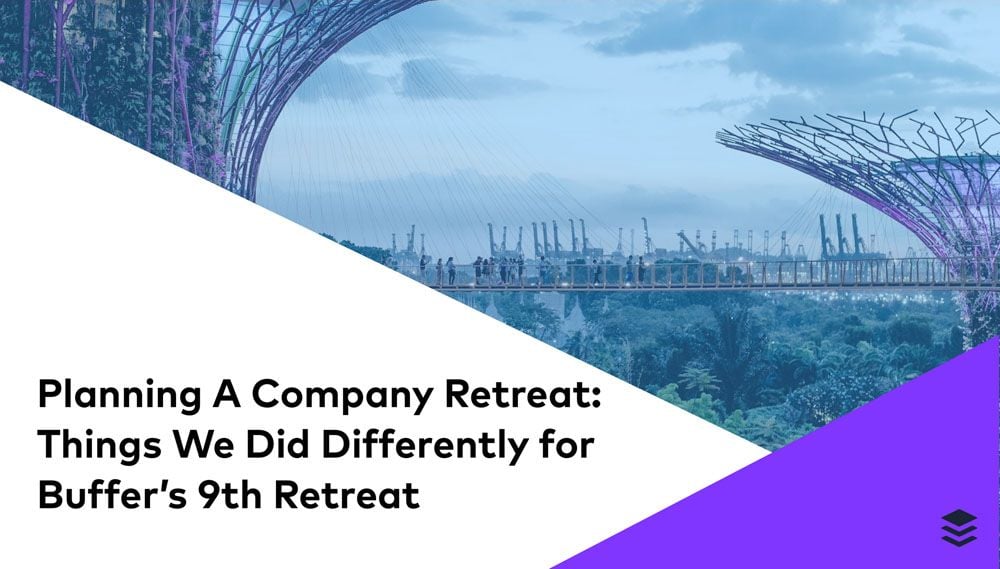
Retreat models and setting an overall vision
In reflecting on those questions and where our team has been, both literally and figuratively, it became clear to us that Buffer retreats have typically fallen into one of three models: the City model, the Resort model, and the Rural/Suburban model.
The City model is largely a location-centric approach, where a big part of the retreat experience is the shared experience of a cool city or place. Our New York, Sydney, Reykjavik, and Madrid retreats come to mind. In these Buffer retreats, the team has typically stayed at a hotel (or a few, depending on availability in the city) around the city center and worked from a coworking or event space during the day. Travel or commuting to the workspace is likely during such a retreat, e.g. our daily walk between Google Campus and our Madrid hotel was 15–20 minutes.
In contrast, the Resort and Rural/Suburban Models are more team-focused alternatives. The Resort model deliberately reduces the geography of the retreat, in a manner of speaking. Everything the team needs is located in close proximity or within a single area – lodging, workspace, food, and perhaps even activities. This area may be of some distance from the city center, but would likely still be accessible on foot or by public transport. Our Cape Town and Hawaii retreats were prototypes of this model.
The Rural/Suburban model is exactly what it says on the box. With this approach, the location may be rather out of the way and is unlikely to be located in a big city. This works well for small team gatherings since all the focus is solely on the participants and any bonding or work objectives they set for themselves. The Publish team’s 2017 mini-retreat in Pemberton, BC fits this model well. During that one-week work-focused meet-up, the team shared an Airbnb, cooked their meals together, and had plenty of heads-down time to crush some big project goals. All the time saved commuting between workspace and living space also meant that they had plenty of opportunity to bond, too!
While each approach has its own strengths and has worked for the Buffer team at different points in time, Nicole and I pondered over which model best fit our team’s needs at the moment. What did we want to achieve for the 9th Buffer retreat?
After some reflection over the past year at Buffer, feedback from the Madrid retreat, and our overall team sentiment at that time, we came up with these four objectives for the 9th Buffer Retreat:
- To create opportunities for connection
- To minimize stressors and support time for restoration
- To provide a variety of activity options to cater to our diverse team
- To work with a reasonable cost
The retreat models and objectives helped frame our evaluation of each city and present three distinct retreat experiences to the team.
Leaning further into transparency
The models and objectives helped us crystallize many of the observations and learnings during the scouting trip and it became apparent how a retreat in each location would turn out: Budapest would clearly be a City retreat, while Scottsdale and Singapore better fit how we’d conceptualized a Resort retreat (with Singapore being a potential hybrid of the two).
We shared our learnings in a Retreat Diaries section of our weekly team newsletter and it was a fun way to keep the team in the loop about how things were going.
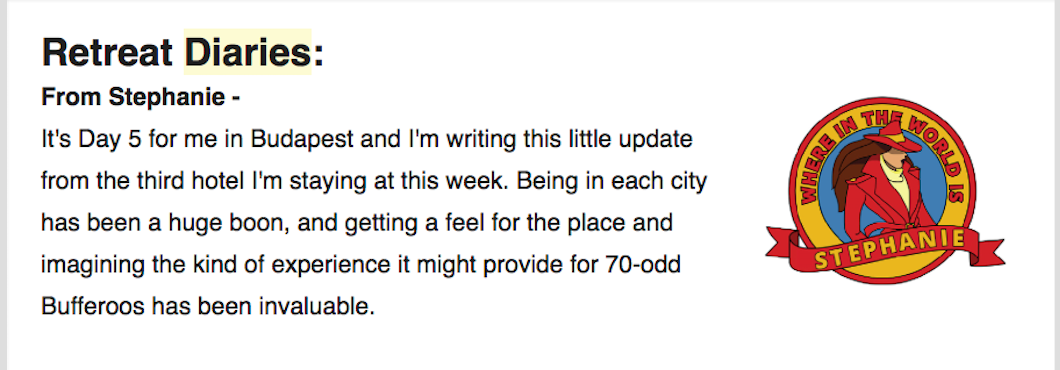
Given the energy and momentum we were seeing across the company at that point in time, Nicole and I had a strong hunch that the resort model would present the best opportunities for us to take a step back, breathe, and recuperate. That left Scottsdale and Singapore in the running.
However, we’d been receiving some positive feedback about the retreat diaries and transparency around the process, and with Joel’s encouragement, we decided to open up the final decision to a vote from the whole company.
In the past, voting was typically only done early on when shortlisting locations for the final evaluation, and the final location was almost always decided upon by the retreat planners. For good reason, too! There are so many factors that go into a great retreat and the popular choice is not often the best choice.
However, what the scouting trip revealed was that all three locations we were considering were pretty solid options. We were confident that the team would have a great time anywhere we chose to go!
To give the team as much context as they needed to make the decision, we repurposed an earlier proposal for Joel and the People and Finance team and put together a deck. This deck contained a summary of how the cities compared and further details about what the cities were like plus the lodging and workspace options that we had, and the overall cost to Buffer.
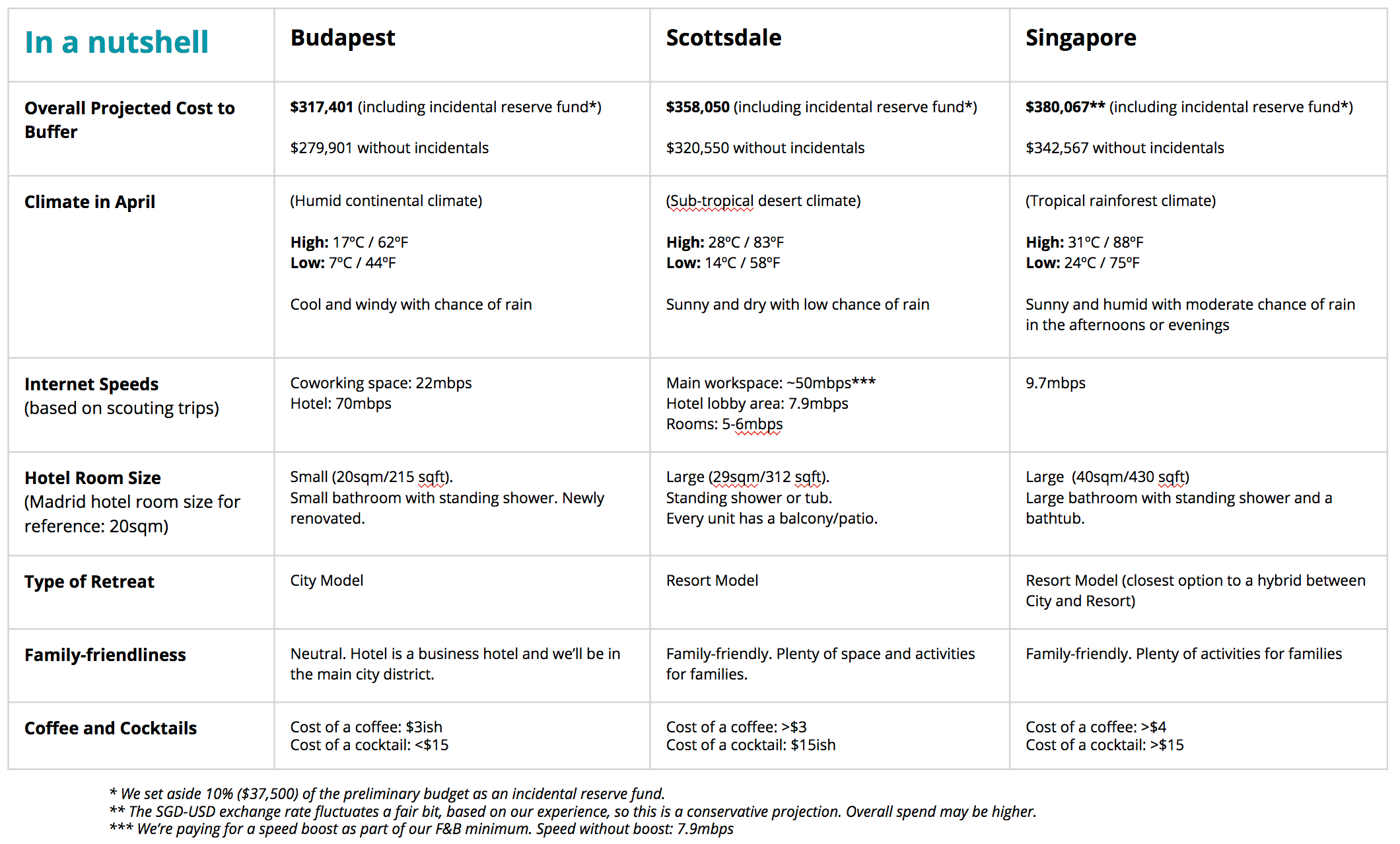
And the team decided on Singapore — a city most of the team had never been to before!
(Over)communicating along the way
Since this would be the first time visiting Singapore for most of the team, it was particularly important for us to answer any questions that may come up about the retreat and the city. We started an FAQ document fairly early in the process and it was a ‘living’ document that was updated along the way. It covered a gamut of questions from visas and currency to expenses and cultural considerations. By the time the retreat began, we had 24 pages of information in the document.
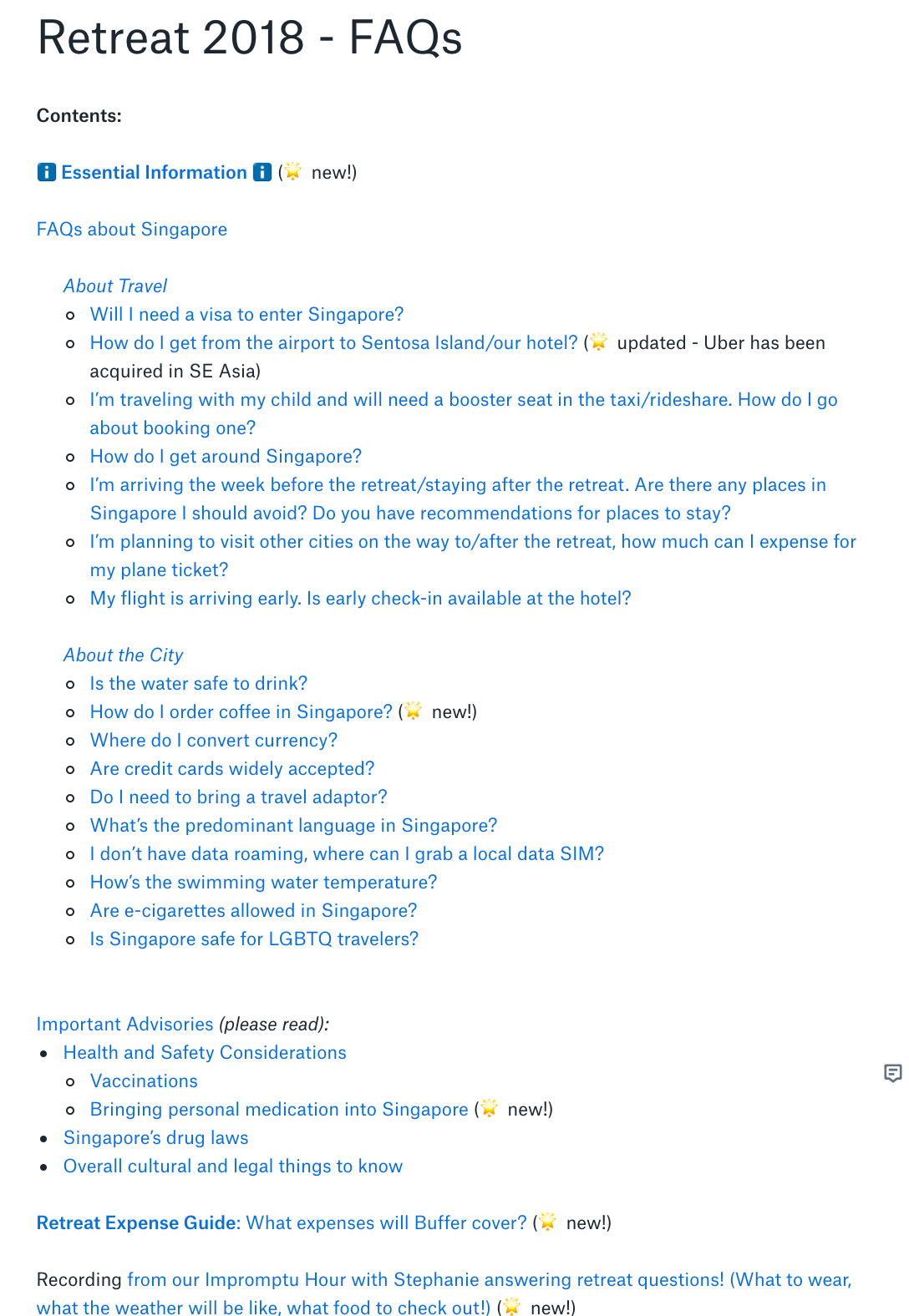
The weeks leading up to the retreat can be a hectic time for us. Many Buffer teammates choose to travel during these weeks and some may be preparing for their very first international trip. As comprehensive as the FAQ document was, we do not expect that all teammates would be able to get through every single line amidst the hustle and bustle.
To support the team during this time and ensure that they have (at least) the essential information, we introduced two more communication strategies:
1. Daily reminders in the retreat Slack channel
To ensure that teammates had the essential information they needed, Nicole and I posted daily updates in a Slack channel we’d set up just for the retreat. Each message contained only two reminders to avoid information overload.


2. Impromptu Hour Retreat Chat
Impromptu Hour chats are regular ‘non-worky’ group syncs that anyone in the company can join. It’s a wonderful way we connect about life in general and get to know each other outside of work stuff. We dedicated one impromptu hour to chat about everything under the sun about the retreat and recorded it for teammates who couldn’t make it. It was fun to chat about everything from the climate in Singapore (hot and humid), local food to try (chicken rice), and clothing items to bring (all your summer gear).
Teamwork makes the dream work
The 9th Buffer retreat also saw the launch of our very first retreat committee. Once we were wrapping up the scouting trips, Nicole and I sent out a call for volunteers to act as a sounding board for retreat planning and also to take over some parts of the process. We’re so grateful for our team of seven who took time out of their busy schedules to help us think through everything from swag to team bonding activities!
Exploring Inclusivity and its multiple dimensions
As much as long-haul travel is part and parcel of the retreat experience for a remote team dispersed across the world, it’s not always possible for everyone. Sometimes teammates are not able to be physically present for the retreat for various reasons.
In the past, these teammates may have been on family leave and would not have been working regular hours anyway. This time around, however, we had two teammates who were working regular hours during the retreat week and this prompted us to craft a more intentional ‘retreat week plan’ for them. Here are two things we did differently:
1. A special retreat week schedule/work plan.
We designed the retreat program to be as much about team bonding as high-level company vision sessions, which left less time than usual for the team to focus on day-to-day tasks. Recognizing that this may translate into more pressure on teammates back home to ‘pick up the slack’, the dedicated retreat work plan was designed to take this burden away. We did not want at-home teammates to work 12-hour days, instead, the idea was to use the opportunity of ‘less noise’ on Slack to spend more time on heads-down projects they were inspired by and work strategically during that week.
To this end, we also made sure to record retreat sessions for our teammates back home for their next-day review and emphasized async communication with them during the week.
These are just baby steps in our commitment for company retreats to be as inclusive as possible. Nicole and I are deeply grateful to the managers and directors who worked hard to build this work plan and implement it. We’re excited to iterate on these for our next retreat!
2. A relaxing activity and a meal on Buffer
In addition to the weekends bookending the retreat, we typically designate one weekday as a day off to hang out with the team and explore the city. This day off is usually accompanied by a Buffer Fun Fund (BFF): an allowance to cover the costs of any activities teammates wanted to participate in. With the Buffer Fun Fund, teammates have skydived in Hawaii, played bubble soccer in Madrid, and visited a trampoline park in Singapore. (Spa visits are also a popular BFF activity in all the cities we visit!)
We wanted teammates back home to enjoy a revitalizing day off, too and encouraged them to do something fun and relaxing with their BFF.
Although they couldn’t be physically present with us at the team dinner, we wanted to share some Buffer love over yummy food with our teammates back home too. Teammates were encouraged to have a nice meal and expense that with love from Buffer.

What’s next?
The team spent the week on Sentosa Island, a resort island just off mainland Singapore, and we had everything we needed at our fingertips. Despite the long journeys to get to Singapore – 18– 24-hour flights for some! – the slower, more relaxed pace gave everyone room to rest and enjoy the time together.
We worked from the ballroom of the hotel and this shortened the commute from 20 minutes in Madrid to just 3 minutes in Singapore. This gave us more wiggle room to design breathing room into the schedule and we ended work at 5 pm every day. Each evening, teammates either planned dinners and activities in the city or just hung out by the pool, which was open 24 hours.

Nicole and I were incredibly grateful (and relieved!) that our intuitions about the resort model were validated. The geeky part of me was especially delighted to see specific mentions of it in the feedback we received:
“The resort model really made this one shine, not because it was luxurious (which is was) but it created an environment of serendipity because so much of it was free flowing. Not needing to plan little details, like where my next meal will be for example just relieved a lot of low grade stress that I think has been present in past retreats.”
“The hotel + great room + breakfast + lunch + pool situation is hard to beat personally. I LOVE that all-in-one setup :)”
“I loved that everything was within the resort. We didn’t need to commute to work or lunch. This gave us more time together.”
Now that July has rolled around, Nicole and I are putting our thinking hats back on and starting work on the next retreat. It’ll be Buffer’s 10th retreat and we are beyond excited! Every retreat is a precious learning experience and we are stoked to reflect on how to improve further.
Do you plan retreats for your company? I’d love to hear your thoughts and learn how you do it! Plus feel free to share any ideas you have for Buffer’s 10th retreat in the comments. ?
Photo by Annie Spratt
Try Buffer for free
190,000+ creators, small businesses, and marketers use Buffer to grow their audiences every month.
